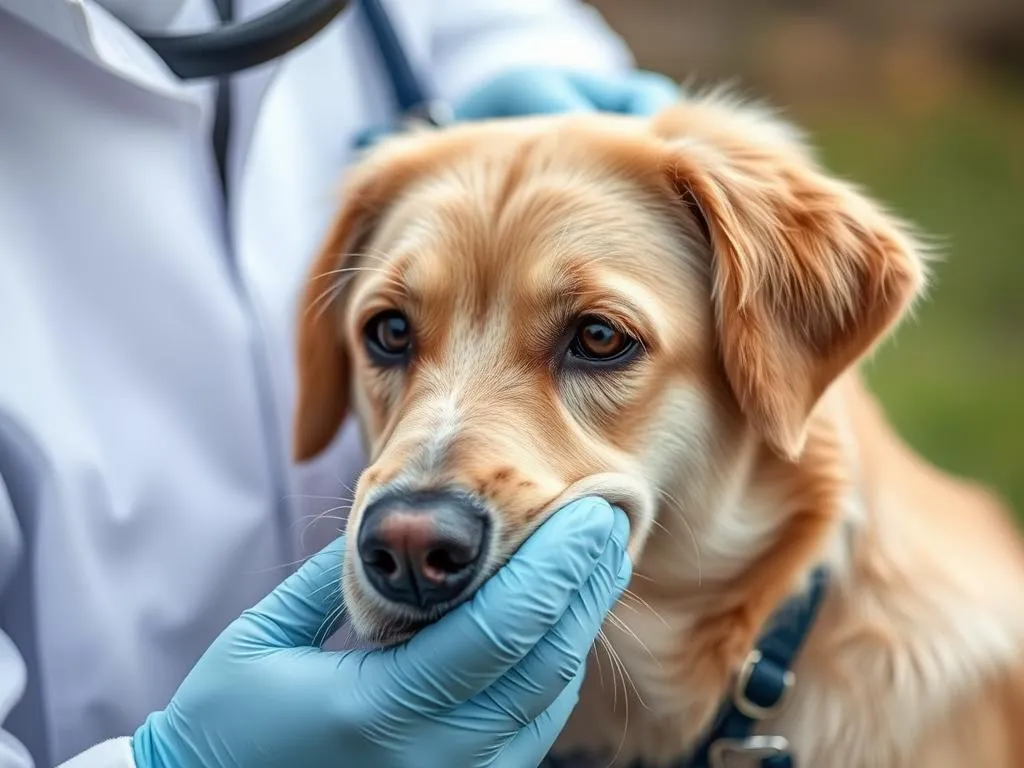
Can dogs really suffer from pollen allergies? This question is increasingly common among pet owners, especially during spring and summer when pollen counts soar. Allergies can significantly impact a dog’s quality of life, so understanding how they manifest and how to manage them is essential. This article will explore the nuances of dog allergies, specifically focusing on pollen, to help you understand if your furry friend is affected and what steps you can take.
Understanding Allergies in Dogs
What Are Allergies?
Allergies are the immune system’s response to substances (known as allergens) that are typically harmless to most individuals. When a dog’s immune system mistakenly identifies a benign substance as a threat, it triggers an allergic reaction. This can lead to a range of symptoms affecting the skin, respiratory system, and overall health.
Types of Allergies Common in Dogs
Dogs can experience various types of allergies, including:
- Food Allergies: These occur when a dog reacts to specific ingredients in their diet, such as beef, chicken, dairy, or grains.
- Environmental Allergies: These are caused by external factors like pollen, dust mites, mold, and other substances in the environment.
- Contact Allergies: These result from direct contact with allergens, including certain fabrics, chemicals, or plants.
How Allergies Affect Dogs
Symptoms of allergies in dogs can vary widely. Common signs include:
- Itching and scratching
- Red or inflamed skin
- Sneezing and coughing
- Watery eyes
- Ear infections
Allergies can affect a dog’s overall health and quality of life, leading to discomfort, anxiety, and even secondary infections if left untreated.
Pollen Allergies in Dogs
What is Pollen?
Pollen is a fine powder produced by plants during the reproductive process, primarily from trees, grasses, and weeds. There are three main types of pollen:
- Tree Pollen: Often prevalent in early spring.
- Grass Pollen: Typically peaks in late spring and early summer.
- Weed Pollen: Generally found in late summer and fall.
Pollen levels can vary seasonally, which means that some dogs may experience allergies at specific times of the year.
Can Dogs Be Allergic to Pollen?
Yes, dogs can be allergic to pollen. Pollen is considered a common allergen for many pets, and studies suggest that approximately 10-15% of dogs may suffer from some form of environmental allergies, with pollen being a significant contributor.
Symptoms of Pollen Allergies in Dogs
Symptoms of pollen allergies in dogs can manifest in various ways, including:
- Sneezing and Coughing: Similar to humans, dogs may sneeze or cough when exposed to pollen.
- Itching and Skin Irritations: Dogs often scratch or chew on their skin, leading to redness, hot spots, or hair loss.
- Ear Infections: Allergies can result in inflammation of the ears, making them prone to infections.
- Respiratory Issues: In some cases, pollen allergies can exacerbate existing respiratory conditions, leading to wheezing or difficulty breathing.
Understanding these symptoms is crucial for dog owners, as early detection can lead to more effective treatment.
Diagnosing Pollen Allergies
The role of a veterinarian in diagnosing allergies is vital. If you suspect your dog has a pollen allergy, a vet will typically perform a thorough examination and may recommend one of the following diagnostic methods:
- Skin Tests: These tests involve introducing small amounts of allergens to the skin to observe reactions.
- Blood Tests: These can identify specific antibodies related to allergens in your dog’s blood.
Accurate diagnosis is essential for determining the best course of action for treatment.
Treatment Options for Pollen Allergies
Conventional Treatments
When it comes to treating pollen allergies in dogs, several conventional methods are available:
- Antihistamines and Corticosteroids: Medications like Benadryl can help alleviate mild symptoms, while corticosteroids may be prescribed for more severe reactions.
- Allergy Shots (Immunotherapy): This treatment involves gradually exposing the dog to increasing amounts of the allergen to build tolerance over time.
Home Remedies and Natural Treatments
In addition to conventional treatments, some dog owners prefer natural remedies. Consider the following:
- Dietary Considerations: A balanced diet rich in Omega-3 fatty acids can help improve skin health and reduce inflammation.
- Supplements: Certain supplements, such as probiotics or fish oil, may help alleviate allergy symptoms.
Always consult your veterinarian before introducing new treatments to ensure they are safe and appropriate for your dog.
Preventative Measures
Taking steps to reduce your dog’s exposure to pollen can significantly alleviate symptoms. Here are some effective strategies:
- Reduce Exposure to Pollen: Keep your dog indoors during high pollen counts, typically early morning and on windy days.
- Bathing and Grooming Routines: Regular baths can remove allergens from your dog’s coat, while grooming helps manage shedding and reduces allergens in your home.
Implementing these preventative measures can make a significant difference in your dog’s comfort during allergy season.
When to See the Vet
Recognizing Severe Symptoms
Some symptoms may indicate the need for immediate veterinary attention, including:
- Severe itching or scratching that leads to open wounds
- Difficulty breathing or wheezing
- Persistent ear infections or foul-smelling discharge
If you notice any of these signs, it’s crucial to seek help from your veterinarian as soon as possible.
Preparing for a Vet Visit
When preparing for a vet visit, consider the following:
- Questions to Ask: Inquire about the best diagnostic methods, treatment options, and any lifestyle changes that can help manage your dog’s allergies.
- Information to Gather: Keep a record of your dog’s symptoms, any changes in diet, and the timing of symptoms in relation to seasonal pollen levels.
Being well-prepared can help your veterinarian provide the best care for your dog.
Living with a Dog Allergic to Pollen
Adjusting Your Dog’s Environment
Creating a low-pollen environment for your dog can help manage their allergies:
- Indoor Modifications: Use air purifiers, regularly clean your home, and keep windows closed during high pollen seasons.
- Outdoor Strategies: Limit outdoor activities during peak pollen times, and consider wiping your dog’s paws and coat after walks to remove pollen.
These adjustments can significantly improve your dog’s quality of life.
Long-Term Management and Care
Managing pollen allergies in dogs requires ongoing care:
- Regular Vet Check-Ups: Consistent veterinary visits can help monitor your dog’s condition and adapt treatments as necessary.
- Monitoring Symptoms and Treatment Effectiveness: Keep track of your dog’s symptoms and communicate any changes to your veterinarian, ensuring the best possible care.
Long-term management can lead to improved health and well-being for your dog.
Conclusion
Understanding if dogs can be allergic to pollen is crucial for pet owners, especially during the allergy season. By recognizing the symptoms and seeking appropriate veterinary care, you can significantly improve your dog’s quality of life. If you suspect your dog has pollen allergies, don’t hesitate to consult your veterinarian for guidance and treatment options. Managing allergies effectively is essential for your dog’s health and happiness.









